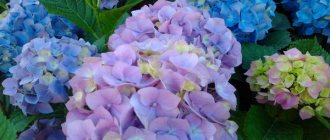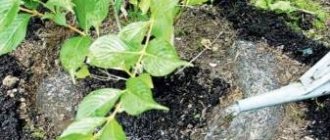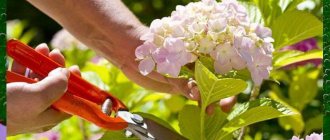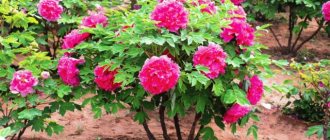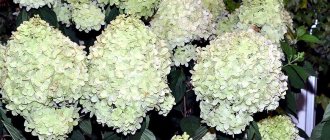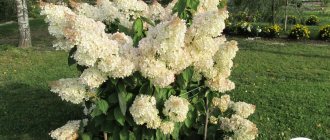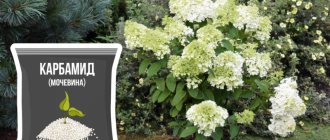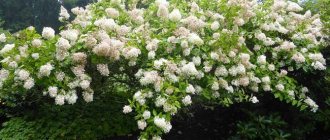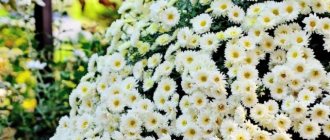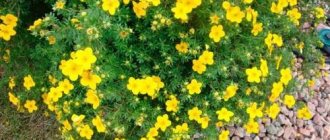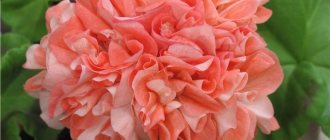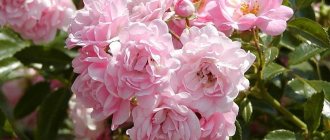Large-leaved, or garden, hydrangea (Hydrangea macrophylla) in its homeland, China and Japan, reaches 4 m in height. In our country it is a low shrub (up to 1 m) with large leaves and blue flowers where the soil is acidic, and pink flowers in slightly alkaline soils.
Most garden forms have spherical inflorescences consisting entirely of sterile flowers. Blooms in July-August.
The most resistant varieties of large-leaved hydrangea are from the Endless Summer, Forever & Ever and You & Me series. They bloom both on last year's shoots and on current year's shoots, which guarantees their annual flowering.
- Directions for selection of large-flowered hydrangeas Form of inflorescences
- Features of flowers
- Variegation
- Endless Summer Series Endless Summer
- Fantasia
- Romance
- Hovaria Love You Kiss Series
- Schloss Wackerbarth
in the photo is a large-leaved hydrangea variety Endless Summer
Directions for breeding large-flowered hydrangeas
The shape of the inflorescences of large-leaved hydrangeas
First of all, the shape depends on which variety of hydrangea participated in the selection: changeable hydrangea (H. macrophylla var. mutabilis), with spherical and hemispherical lush inflorescences, or Japanese hydrangea (H. macrophylla var. japonica), with flat, graceful umbrella-shaped inflorescences.
The main breeding centers of large-leaved hydrangea are located in America, Holland and Japan.
Poisk store offer
Hydrangea large-leaved So Long RosieBuyHydrangea large-leaved So Long SunnyBuyHydrangea large-leaved AishaBuyHydrangea paniculata BoboBuyHydrangea paniculata White LightBuyHydrangea paniculata LamlightBuyHydrangea paniculata PolstarBuyHydrangea paniculata Samme SnowKu drinkHydrangea paniculata PhantomBuyHydrangea paniculata Midlate SammeBuyHydrangea paniculata Magical Sweet SammeBuyHydrangea paniculata Pastel GreenBuy
Features of large-leaved hydrangea flowers
The shape of the petals of sterile flowers in modern varietal hydrangeas is very diverse. They can be:
- wavy (Libertin);
- concave (Hopcorn);
- corrugated (Freepon);
- serrated and fine-toothed (Koria, Twist & Shout).
An interesting direction of selection is that produces flowers located along the edge of flat inflorescences on long stalks. Such inflorescences are found in the Fireworks or Shooting Stars series.
in the photo there is a large-leaved terry hydrangea
Variegation of leaves of large-leaved hydrangea
There are still few varieties of hydrangeas with variegated foliage. Among large-leaved hydrangeas, the most famous varieties are Variegata, Mariesii Variegata, whose green leaves have a white edge, Lemon Wave with yellow variegation, as well as Tricolor and Quadricolor, the foliage of which is covered with white and yellow spots and strokes of different sizes.
in the photo there is a variegated form of large-leaved hydrangea
The color range of large-leaved hydrangea varieties is very diverse - from pure white, pink to red and purple. There are also bicolor varieties or so-called chameleons, which gradually change color.
The most resistant varieties of large-leaved hydrangea
Remontant varieties of large-leaved hydrangeas are positioned as the most winter-hardy. Their distinctive feature is two waves of flowering due to the rapid ripening of the buds of the current year. Remontant varieties are combined into several series. The most popular of them:
- Endless Summer series (abbr. ES);
- the Forever and Ever series (abbr. FE), created on the basis of the Early Sensation variety, more frost-resistant than ES;
- You and Me series (abbr. YM), almost all varieties of the series are terry.
Endless Summer hydrangea series
The Endless Summer series includes Bailmer (The Original), Blushing Bride, Twist-n-Shout (PIIHM-1) and Bloom Struck (Bloom Star). All varieties have bright large inflorescences, usually round in shape. The exception is the Twist-and-Shout variety with a flat bud shape.
variety of large-leaved hydrangea Endless Summer
The first variety of large-leaved hydrangea, capable of blooming on the shoots of the current year, gave its name to a whole series of varieties. For its ability to bloom again, the variety was named Endless Summer, which means “Endless Summer”.
Bush 1–1.5 m high. Inflorescences are spherical, up to 15 cm in diameter. The color changes depending on the acidity of the soil. The variety is characterized by increased winter hardiness. Even if the buds on last year’s wood suffer in winter, the young shoots will still bloom.
in the photo is a large-leaved hydrangea variety Endless Summer
Unfortunately, you may encounter confusion in the names of varieties. So, if you want to purchase the Endless Summer variety, you can find varieties on sale called Endless Summer Blue, Bailmer or Endless Summer Bailmer Blue. However, these are just the same variety.
variety of large-leaved hydrangea Blue Bloom Star
An adult bush can reach 1.2 m in height and width. The shoots are burgundy and strong. The veins on the leaf blade are burgundy. The variety blooms in large spherical inflorescences with a diameter of 15–18 cm, consisting of sterile pink or blue flowers. The leaves are resistant to powdery mildew.
variety of large-leaved hydrangea Twist & Shout
A bush about 1 m high and wide. A variety with lacy flat inflorescences, in the middle of which there are small fertile flowers, surrounded by a necklace of large sterile pink flowers. The edges of the leaves are finely toothed. The diameter of the inflorescences is from 10 to 16 cm.
For more active re-blooming, it is necessary to prune previously faded inflorescences.
large-leaved hydrangea variety Blushing Bride
One of the new products in the series is a variety with a beautiful name, which translates as “shy bride.”
A bush up to 1.5 m high and about 1 m wide with white inflorescences with a slight pinkish tint. The variety is most resistant to diseases. Resistant to chlorosis.
Caring for paniculata hydrangea
In our latitudes, paniculate hydrangea is valued for its amazing winter hardiness and unpretentiousness. Combined with spectacular beauty and diversity, this rightfully gives her the title of a real queen of the garden. It is planted in summer cottages and used in complex landscape design.
Temperature
Paniculate hydrangeas are so adapted to our climatic conditions that in warm regions you can even root seedlings in September. They tolerate winter frosts with virtually no problems, but young shrubs should be covered. First, fill the ground around with mulch, and then with spruce branches and tighten with spunbond or other similar material.
Photo: pinterest.ru
Lighting
Don’t forget that paniculata hydrangea is a Far Eastern guest. Therefore, she needs moderate lighting and protection from aggressive ultraviolet radiation. In constant bright sun it grows worse and smaller, so choose light partial shade.
Photo: oir.mobi
Watering
Lush paniculate hydrangea loves moisture very much, so it tolerates short-term waterlogging much better than drought. She definitely needs uniform and moderate watering - about twice a week, 3 buckets per bush. And don’t forget to mulch the soil around the trunk to retain moisture.
Photo: hozcity.ru
The soil
Paniculata hydrangea prefers loamy soils, but sandy soils are not suitable for it. It grows poorly in soil that is too dry and clogged, and increased alkalinity leads to the development of chlorosis and other diseases. Acidity can be high or neutral, so it does not have to be adjusted.
Photo: botanichka.ru
Fertilizers and fertilizing
Hydrangeas definitely need spring feeding, which is more convenient and best combined with pruning. Choose complex mineral fertilizers in the form of granules, which are applied under the mulch. In the first year, there is no need to feed seedlings in open ground.
The first feeding is carried out immediately after the first shoots appear, the second - at the stage of formation of buds for lush flowering. The third is carried out at the end of summer to prepare the bush for wintering and lay the foundation for next year. But don’t overdo it with additives, because if the inflorescences are too lush and heavy, the branches may break.
Photo: flo.discus-club.ru
Transplantation and propagation
Paniculate hydrangea is propagated by cuttings with 3-5 pairs of buds. To help them settle down better in a new place, use special rooting products. Fertilize the soil well with compost in advance, and then cover the young seedlings with covering material until the end of the summer heat.
Paniculata hydrangea can be propagated by layering, burying the lower shoot until buds appear by 15-20 cm. Secure it with a support, stones or wire, and constantly hill up new shoots. Next year the cuttings can be separated from the bush and planted.
Replanting is carried out in early spring, along with fertilizing, pruning and mulching. But you can plant seedlings from containers throughout the season. For planting, you need a hole up to 50 cm deep, and mix the soil with peat, sand and fertilizers.
Photo: sdelai-lestnicu.ru
Trimming
In early spring, young hydrangea is pruned to maintain shape and improve growth. To do this, shorten the shoots, leaving a few strong buds. At first you will have to cut to a whole third of the length - this is a normal natural process.
With age, annual maintenance pruning is carried out in late autumn or spring before the start of the growing season. Get rid of weak, too thin and too long shoots. Remove frozen branches, branches that interfere with each other or grow inside the crown.
It is not necessary to remove faded inflorescences, but for old and weak plants this is a safety measure. Otherwise, in the fall, due to wind and rain, thin shoots may simply break off under the weight of the brushes.
Photo: otomatah.ru
Paniculata hydrangea: varieties with photos and names
Forever & Ever hydrangea series
Based on the Early Sensation variety, another commercially successful Forever & Ever series was eventually created. Currently it consists of varieties Early Sensation (trade name Forever & Ever Pink/Blue), Red Sensation, White Ball, Pepermint, Fantasia. The varieties can withstand temperatures down to -20...-24 °C. Even with light shelter, plants are quite capable of surviving the winter without serious problems.
large-leaved hydrangea variety Fantasia
A remontant variety with a unique combination of colors: from light green to bright green, red and crimson.
variety of large-leaved hydrangea Red Sensation
The title translates as "Red Sensation". When artificially dyed, burgundy-red inflorescences can change color to purple-burgundy.
The bush is compact, 60–90 cm high. The inflorescences are spherical, 10–12 cm in diameter. At the beginning of flowering, the flowers are bright scarlet with a brilliant tint; by autumn they acquire a duller pastel color in burgundy tones. Winters under cover.
In the photo there is a variety of large-leaved hydrangea Forever & Ever Red
large-leaved hydrangea variety Peppermint
Delicate pink petals with a white border along the edges, inflorescences reach 20 cm in diameter.
A miniature bush 60–70 cm high. It is frost-resistant and does not require shelter.
Also popular from the same series are the snow-white White Ball and the bright blue Blue Heaven.
Hydrangea series You & Me
It consists of remontant varieties - Romance, Together and Expression and also winter-hardy, but not remontant: Forever, Symphony (purple) and Eternity.
variety of large-leaved hydrangea Romance
Pink double flowers open gradually from the edge to the center of the inflorescence. Delicate flowers resemble double stars.
in the photo there is a variety of large-leaved hydrangea Romance
large-leaved hydrangea variety Together
A variety with double flowers: greenish when blooming, then pale lilac. At the same time, there are flowers of both colors on the bush at the same time.
In the photo there is a variety of large-leaved hydrangea Together
large-leaved hydrangea variety Expression
The inflorescences consist of large pink double flowers.
large-leaved hydrangea variety Eternity
A variety with double pink star-shaped flowers.
large-leaved hydrangea variety You & Me Love
New terry variety! Awarded a gold medal from the National Plant Show.
Double flowers, two-color at the beginning of flowering: pink and cream. Color may vary depending on soil acidity. The inflorescences are dense, up to 20 cm in diameter. The variety is remontant.
Planting a plant in open ground
Choosing a place and time of landing
Paniculata hydrangea is not a picky crop, however, certain rules for choosing a location exist for this species.
The basic requirements for the location of the plant on the site are as follows:
- Most varieties tolerate partial shade well. However, for full, long and abundant flowering, you still need good illumination (from 6 hours a day). It is extremely undesirable to expose the crop to the rays of the scorching sun at noon (from 12-00 to 15-00) to avoid burns of leaves and inflorescences, as well as overheating of the roots.
- There is protection from the wind (fence, taller trees), but they should not significantly shade the bushes.
- Distance from the surface of soil water (at least 1.5 m). Low-lying areas where stagnant processes are possible are also unacceptable.
- Absence within a radius of 2 m or more of plantings with a superficial-lateral root system similar to hydrangea to provide the plant with access to moisture and nutrients.
It is better to plant paniculate hydrangea in open ground in the spring, so that it has time to take root and develop before winter. In the southern regions, the procedure can be carried out in the autumn (at the beginning of the period).
Soil preparation
For normal growth and abundant flowering of paniculate hydrangea, soil with certain characteristics is required: well-drained, air- and water-permeable, with a neutral or slightly acidic level of acid-base balance. Sandy soil is not recommended for the plant.
The depth of the planting hole should be approximately 2 times greater than the volume of the root with a lump of earth with it (40-60 cm) and other dimensions (length, width) from 50x50 cm. Soil is dug out of the hole, and 2 buckets of water are poured into the hole for soaking. The next day, this space is filled with a mixture of peat, humus, turf soil and clean river sand in the proportion: 2: 2: 1: 1, respectively.
Mineral fertilizers are additionally added to the specified substance :
- superphosphate - 65 g;
- potassium sulfate - 25 g;
- urea - 25 g.
Depending on the varietal specifics (compact or spreading bush), the distance between planted crops is left from 1.5 to 2.5 m.
The plant should not be deepened significantly. It is necessary that its root system is flush with the ground, even slightly translucent.
Immediately after planting, the hydrangea needs to be watered abundantly, as well as a layer of mulch made from peat, bark, pine needles or similar materials. In the future, this will be an effective way to control weeds and conserve moisture.
Hovaria hydrangea series
A series of remontant varieties, one of the most resistant to frost and disease. The series is characterized by combinations of pink-red and greenish colors.
large-leaved hydrangea variety Love You Kiss
A very beautiful variety, blooming with white flowers with bright pink ruffles.
in the photo there is a large-leaved hydrangea variety Love You Kiss
large-leaved hydrangea variety Hopcorn
A variety of hydrangea with dense inflorescences of flowers with rounded petals. The color of flowers in alkaline and neutral soil will be dark pink, in acidic soil - violet-blue.
large-leaved hydrangea variety Hobella
A fairly new variety that changes color from soft pink to cherry red. The transition from one color to another passes through a greenish tint.
large-leaved hydrangea variety Riple
Quite large, up to 1.2 m in height, with very strong shoots. It is distinguished by large white-pink spherical inflorescences.
variety of large-leaved hydrangea Sweet Fantasy
The bush is dense. The flowers are variegated: pink with red splashes. The fall foliage is yellow with red spots.
What are the types and varieties of paniculata hydrangea?
There are several hundred varieties of paniculate hydrangea. Breeders and gardeners have developed several approaches to their classification. According to the height parameter there are:
- tall - up to 3 m;
- short - 1-1.3 m.
According to the date of appearance of inflorescences:
- early - from May;
- average – June, July;
- late - from August to October.
Depending on care requirements:
- heat-loving;
- winter-hardy;
- for shady areas;
- for open (sunny) places.
More varieties of large-leaved hydrangea
And a few more varieties of large-leaved hydrangea that can be found on sale. However, most are best grown in container culture.
large-leaved hydrangea variety Schloss Wackerbarth
A very beautiful and unusual variety.
The inflorescence is spherical, dense and quite large. Red-crimson flowers with a blue-violet center. The more acidic the soil, the brighter the blue color. Towards the end of flowering, the ends of the petals turn green.
More suitable for growing in container culture.
In the photo there is a variety of large-leaved hydrangea Schloss Wackerbarth
variety of large-leaved hydrangea White Wave
Bush up to 1.2 m high. White inflorescences with various shades of pink or blue.
In the photo there is a variety of large-leaved hydrangea White Wave
large-leaved hydrangea variety Fireworks White / Hanabi
A unique variety of hydrangea with star-shaped double flowers.
Bush with dark leaves. The inflorescences are lacy, large. Fertile flowers are pale pink or blue depending on the acidity of the soil, sterile flowers are white double stars.
Suitable for growing in container culture.
in the photo below is the variety of large-leaved hydrangea Nightingale, above is the variety of hydrangea Hanabi / Fuji Waterfall
variety of large-leaved hydrangea Nikko Blue
Nikko Blue is considered a real star among blue-flowered hydrangeas.
This is a remontant hydrangea. The bright blue color appears only on acidic soil. On neutral and alkaline, its color becomes almost white.
In the photo there is a variety of large-leaved hydrangea Nikko Blue
large-leaved hydrangea variety Ayesha
Bush up to 0.9–1 m. The flowers are initially creamy-white, then light pink or pale lilac depending on the acidity of the soil. Requires shelter for the winter, winter hardiness zone 5–6.
The variety is suitable for growing in container culture.
In the photo there is a variety of large-leaved hydrangea Ayesha
variety of large-leaved hydrangea Early Blue
Bush 0.8–1.2 m. Blooms on last year's shoots, inflorescences are blue, spherical.
Advantages of large-leaved hydrangeas compared to other species
Large-leaved hydrangeas remain today the most favorite garden type of hydrangea. Even though they are not always the most decorative and “reliable”, it is the large-leaved beauties that have become a kind of standard among these shrubs - both in terms of the effect of large caps and the attractiveness of bright foliage. Yes, perhaps, and in terms of different forms of cultivation and possibilities of use as garden decoration.
One of the main “trump cards” of large-leaved hydrangeas is a wide variety of colors. The color palette of even the same plant varies depending on the composition and characteristics of the soil, the quantity and quality of fertilizing, the characteristics of the water for irrigation and the weather.
By changing the acidity of the soil, rare blue and blue colors can be obtained from pink (but not white) varieties of hydrangeas. But large-leaved hydrangeas also have thousands of varieties, distinguished by the special charm of flowering, the size of the flowers, the change in colors as they bloom or wither... And each variety of large-leaved hydrangeas is unique.
Old varieties of large-leaved hydrangeas, which appeared in garden centers and botanical gardens before the middle of the last century, have long become rare. New, improved versions of even classic varieties offer important bonuses for spectacular flowering:
- the ability to better withstand harsh winters under the right shelter (their frost resistance is almost -30 degrees);
- fast recovery;
- resistance to pests and diseases.
